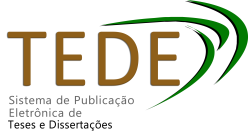| Compartilhamento |


|
Use este identificador para citar ou linkar para este item:
https://sistemas2.uespi.br/handle/tede/1170| Tipo do documento: | Monografia |
| Título: | “The most wild thing of all”: as representações simbólicas no sonho de Max em where the wild things are (2012 [1963]) |
| Autor: | Araujo, Esther Pereira  |
| Primeiro orientador: | Silva, Ruan Nunes |
| Primeiro membro da banca: | Silva, Ruan Nunes |
| Segundo membro da banca: | Cunha, Renata Cristina da |
| Terceiro membro da banca: | Moura, Cláudio Augusto Carvalho |
| Resumo: | Surgindo no final do século XIX, a psicanálise gerou frutíferos desdobramentos para a ciência, não somente em seu teor clínico como também para a crítica. Contemporaneamente, somos capazes de interpretar personalidades literárias que desenvolvem complexos dilemas em suas trajetórias. Assim, a obra Where the Wild Things Are (2012[1963]) apresenta-se como uma rica prática cultural de análise para a crítica literária, em específico a crítica literária psicanalítica, revelando uma conexão profunda entre a mente humana e as representações simbólicas presentes nessa narrativa. A história se dedica às vivências de Max, um garoto com a imaginação vívida por meio da qual, em sonho, cria um cenário distante onde encontra refúgio das tensões da realidade. Tendo em vista esta breve descrição, almejamos responder à seguinte pergunta: quais os significados das representações simbólicas no sonho de Max em Where the wild things are (2012[1963]) a partir da crítica literária psicanalítica? A fim de responder essa inquietação, o seguinte objetivo geral foi estabelecido: investigar quais os significados das representações simbólicas no sonho de Max em Where the Wild Things Are (1963) a partir da crítica literária psicanalítica. A fim de alcançar este objetivo geral, os objetivos específicos a seguir foram delimitados: (i) discutir os pressupostos teóricos da crítica literária psicanalítica freudiana com ênfase em sonhos e representações simbólicas; (ii) relacionar as representações simbólicas dispostas no sonho de Max na obra literária Where the Wild Things are (2012[1963]) e a expressão do seu inconsciente na perspectiva da crítica literária psicanalítica freudiana. No que tange ao percurso metodológico, foi realizada uma investigação com abordagem qualitativa, na modalidade bibliográfica, de cunho exploratório, essencialmente fundamentada em Lois Tyson (2015), Jean Bellemin-Noel (1978), Sigmund Freud (2013), entre outros. A partir destes desdobramentos, foi possível compreender que as pulsões mais primitivas de Max encontraram por meio do sonho uma forma de “materializar” seu desejo latente de se desprender das aparentemente limitantes pressões externas e o levaram a assim melhor enxergar e compreender suas complexidades inerentes ao seu inconsciente. |
| Abstract: | Originating at the end of the 19th century, psychoanalysis generated fruitful developments for science, not only in its clinical content but also for criticism. Nowadays, we are able to interpret literary personalities that develop complex dilemmas along the way. Therefore, Where the Wild Things Are (2012[1963]) presents itself as a rich cultural material of analysis for literary criticism, specifically psychoanalytic literary criticism, revealing a deep connection between the human mind and the symbolic representations present in this narrative. The story focuses on the experiences of Max, a boy with a vivid imagination through which, in his dreams, he creates a distant scenario where he finds refuge from the tensions of reality. With this brief description in mind, we aim to answer the following question: what are the meanings of the symbolic representations in Max's dream in Where the Wild Things Are (2012[1963]), based on psychoanalytic literary criticism? In order to answer this question, the following general objective was established: to investigate the meanings of the symbolic representations in Max's dream in Where the Wild Things Are (2012[1963]) from the standpoint of psychoanalytic literary criticism. In order to achieve this general objective, the following specific objectives were defined: (i) to discuss the theoretical grounds of Freudian psychoanalytic literary criticism with special attention to the concepts of dreams and symbolic representations; (ii) to relate the symbolic representations in Max's dream in the literary work Where the Wild Things Are (2012[1963]) and the expression of his unconscious from the perspective of Freudian psychoanalytic literary criticism. As far as the methodological approach is concerned, a qualitative, bibliographical, exploratory study was carried out, essentially based on Lois Tyson (2015), Jean Bellemin-Noel (1978), Sigmund Freud (2013), among others. From these developments, we were able to understand that Max's most primitive found a way to “materialize” his latent desire to be free from the seemingly and led him to better see and understand the complexities inherent in his unconscious. |
| Palavras-chave: | Crítica Literária Psicanalítica Sonhos Representações Simbólicas Where the wild things are (2012[1963]) |
| Área(s) do CNPq: | LINGUISTICA, LETRAS E ARTES::LETRAS |
| Idioma: | por |
| País: | Brasil |
| Instituição: | Universidade Estadual do Piauí |
| Sigla da instituição: | UESPI |
| Departamento: | Centro de Ciencias Humanas e Letras |
| Programa: | Licenciatura em Letras Inglês |
| Citação: | ARAUJO, Esther Pereira. “The most wild thing of all”: as representações simbólicas no sonho de Max em Where the Wild Things Are (2012 [1963]). 2024. 61 f. Monografia ( Licenciatura em Letras Inglês) - Universidade Estadual do Piauí, Parnaíba, 2024. |
| Tipo de acesso: | Acesso Aberto |
| URI: | http://localhost:8080/tede/handle/tede/1170 |
| Data de defesa: | 2024 |
| Aparece nas coleções: | CIES - Licenciatura em Letras Inglês (Professor Alexandre Alves – PARNAÍBA) |
Arquivos associados a este item:
| Arquivo | Descrição | Tamanho | Formato | |
|---|---|---|---|---|
| Monografia completa.pdf | Monografia Completa | 894,49 kB | Adobe PDF | Baixar/Abrir Pré-Visualizar |
Os itens no repositório estão protegidos por copyright, com todos os direitos reservados, salvo quando é indicado o contrário.




